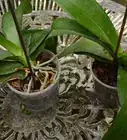This article was co-authored by Katie Gohmann. Katherine Gohmann is a Professional Gardener in Texas. She has been a home gardener and professional gardener since 2008.
wikiHow marks an article as reader-approved once it receives enough positive feedback. This article received 19 testimonials and 95% of readers who voted found it helpful, earning it our reader-approved status.
This article has been viewed 442,370 times.
Orchids are popular as houseplants, and wonderful varieties can be found in nurseries and garden centers. In the wild, orchids grow on trees, and their roots are exposed to sun and air and water. Potted orchids require special watering that mimics their natural environment. Water orchids sparingly, when their soil is almost dry.
Steps
Deciding When to Water
-
1Water sparingly. No orchid variety needs to be watered every day. In fact, overwatering can cause an orchid's roots to rot and eventually die.[1] Unlike many houseplants, orchids should only be watered when they begin to dry out. Watering only when they're almost dry mimics an orchid's natural environment.
- Some orchids have water-storing organs, and some do not. If you have a type of orchid that has the ability to store water, such as cattleyas or oncidiums, you should allow the orchid to completely dry out before watering. If you have a type of orchid that does not have water-storing organs, such as phalaenopsis or paphiopedilums, you should water the orchid before it is entirely dry.
- If you're not sure what type of orchid you have, plan to water the orchid when it is almost dry, but still has just a bit of moisture left.
-
2Consider your climate. The frequency with which you water orchids is affected by the level of humidity in your climate, as well as the amount of sun the orchid gets and the temperature of the air. Since these factors vary according to region and household, there's no rule for how often to water an orchid. You'll have to develop a routine catered to your specific environment.
- If the temperature is cool in your home, your orchid will need to be watered less frequently than when the temperature is warm.
- If the orchid is in a sunny window, it will need to be watered more frequently than if you place it in a shadier spot.
Advertisement -
3See if the potting mix looks dry. This is the first indication that it might be time to water the orchid. Orchid potting mix is usually composed of bark or moss, and if it looks dry and dusty, it might be time to water. However, just looking at the potting mix won't give you an accurate enough indication as to whether it's time to water.
-
4Lift the pot to check its weight. The pot will feel lighter when it's time to water the orchid. If it's heavy, that means there's still water in the pot. Over time, you'll get a sense of how heavy the pot feels when the orchid needs water versus how heavy it feels when it still has moisture inside.
- A pot that still contains moisture might look different, too. If your orchid is in a clay pot, it will look darker when it's still wet. If it's light in color, it might be time for a watering.
-
5Do a finger test. This is the best way to determine whether an orchid needs more water. Stick your pinky finger into the potting mix, taking care not to disturb the orchid's roots. If you don't feel any moisture, or you feel just a little, it's time to water the orchid. If you feel moist potting mix right away, give it more time. When in doubt, you should wait an extra day.
Watering Correctly
-
1Make sure the pot has drainage holes. You can't properly water an orchid unless it has holes through which the water can drain. Water sitting in the pot will cause the roots to rot, so it needs to be able to drain through the bottom. If you bought an orchid that came in an ornamental pot without holes, repot the orchid in one with adequate holes in the bottom. Use an orchid potting mix instead of regular potting soil.
- Look for special pots designed for growing orchids. These pots are usually made out of terracotta clay and have extra drainage holes in the sides. You should be able to find them in the same section as other planters.
- If you just want a quick way to water your orchid without having to transplant the orchid, you can use the ice cube method. Put the equivalent of 1/4 cup (59 ml) of frozen water (usually about three medium ice cubes) on top of the potting mix. Make sure that the ice never comes in contact with the orchid itself - it should only touch the soil. Let the ice cubes melt into the pot. Wait about a week before you do it again. This method is not optimal for the long-term health of the orchid, so only use it as a temporary solution.[2]
-
2Run the orchid under water. The easiest way to water an orchid is to hold it under a faucet and run it under room temperature water. If you have an attachment that allows you to diffuse the water, rather than just running it in one strong stream, that's better for the orchid. Water the orchid this way for a full minute, allowing the water to seep through the pot and come out the holes in the bottom.[3]
- Do not use water that has been softened or treated with harsh chemicals. If you have a special orchid species, see if you can use distilled water or rainwater.
- The water should pour rapidly through the pot. If it seems to be getting stuck in the pot, the potting mix you're using might be too dense.
- After watering the orchid, check the weight of the pot so you'll be able to tell the difference when the pot gets lighter and the orchid is ready to be watered again.
-
3Water in the morning or afternoon. That way the excess water will have plenty of time to evaporate before it gets dark. If water sits on the plant overnight, it can cause rotting to occur or leave the plant prone to diseases.
- If you see excess water sitting on the leaves, wipe it off with a paper towel.
- A few minutes after watering, check the saucer and empty it out so no water sits near the orchid.
-
4Mist your orchid. Since orchids thrive in humidity, misting your orchid is a great way to keep it healthy, especially since it prevents the roots from drying out. Fill a spray bottle with water, then spritz the plant a few times a day. How often you mist the orchid depends on the environment where you live. Drier environments will require more misting, while damp climates may require misting daily.
- If you don't know if your orchid needs another mist, check to see if it feels dry.
- Don't let water collect on the leaves.
- You can find a spray bottle in most department stores or online.
Community Q&A
-
QuestionIs it okay if I set my orchid which is in a plastic pot with drainage holes in the bottom into a ceramic plant pot with water in it?
 Community AnswerOnly for about 5 minutes. Then lift the draining pot out until it drains, re-inserting after dripping stops.
Community AnswerOnly for about 5 minutes. Then lift the draining pot out until it drains, re-inserting after dripping stops. -
QuestionCan I water my orchid from underneath?
 Community AnswerYes. Put your pot in a bowl of water for about 5 minutes before removing it. The water will come up through the drainage holes to water your orchid. Be sure to let all the excessive water drain from the pot. Do this once a week; do not over water your orchid.
Community AnswerYes. Put your pot in a bowl of water for about 5 minutes before removing it. The water will come up through the drainage holes to water your orchid. Be sure to let all the excessive water drain from the pot. Do this once a week; do not over water your orchid. -
QuestionCan I put the ice cube back in the pot if I use the ice cube method?
 Community AnswerI've used this method a lot, but have never removed the ice. I usually place 2-3 ice cubes on top of moss on the outer edge, and let them melt completely.
Community AnswerI've used this method a lot, but have never removed the ice. I usually place 2-3 ice cubes on top of moss on the outer edge, and let them melt completely.
Warnings
- If you use water-soluble fertilizers, salts may build up on the medium or the pot and eventually harm the orchid. Do not use fertilizer with every watering.⧼thumbs_response⧽
- An orchid will die quickly in a pot submerged in water.⧼thumbs_response⧽
- If you pour water over flowers of an orchid small spots of mold will appear on the flowers. This doesn't harm the orchid but it spoils it's looks.⧼thumbs_response⧽
- An orchid whose leaves look wilted or limp can be suffering from either too much water, which rots the roots and makes water unavailable to the leaves, or it can be too dry. Check by touching the medium before watering.⧼thumbs_response⧽
- Don't let water collect on the leaves of your orchid because it could cause bacterial growth and rot.⧼thumbs_response⧽
References
About This Article
To water orchids, wait until they’re almost dry and then water sparingly to mimic their natural environment. Look at the potting soil for the first indication of how dry the orchid is. If the soil looks dry and dusty, it may be time to water. When watering your orchid, make sure the pot has drainage holes. Then, run the orchid under a faucet for a full minute, allowing the water to seep into the pot and come out of the holes. Water in the afternoon to give the moisture time to evaporate before dark. Keep reading for tips on misting your orchid from our Horticulturalist reviewer.
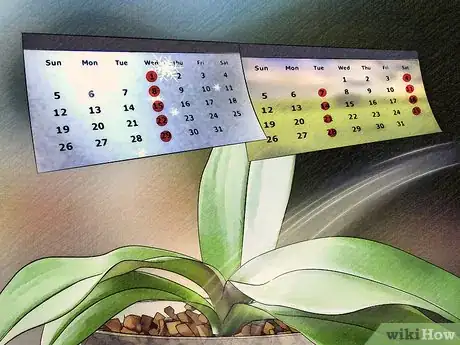
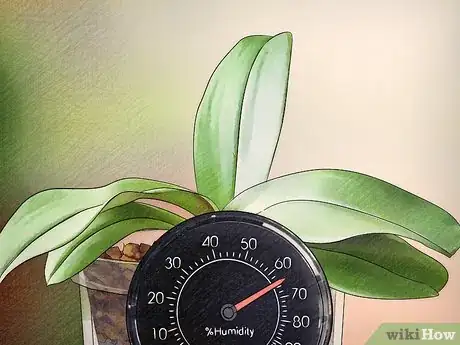
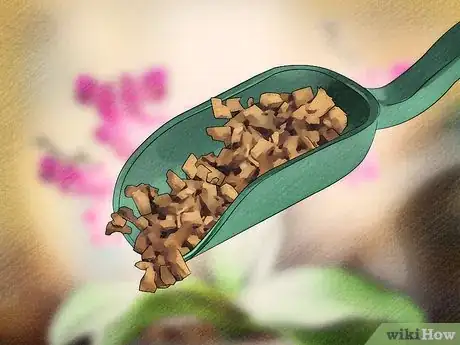
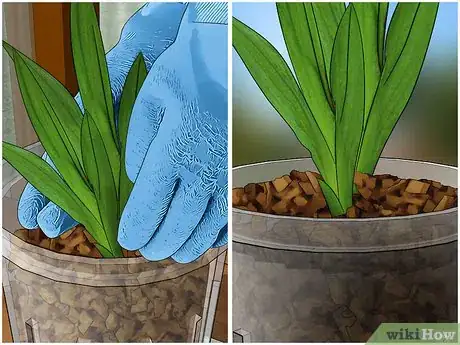
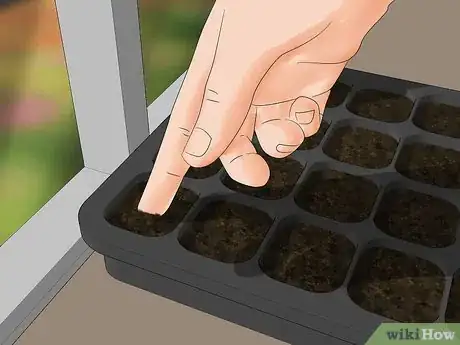
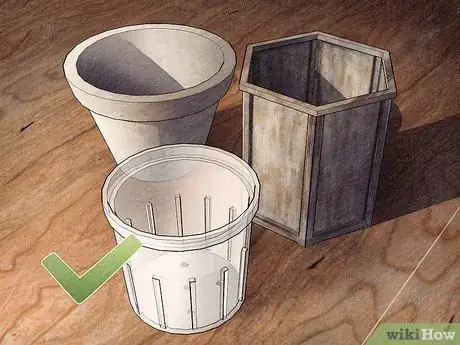
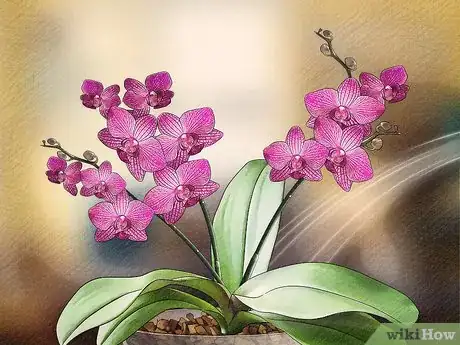
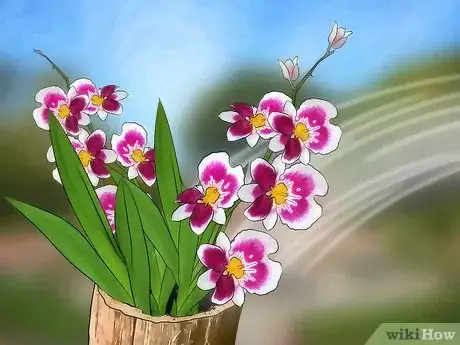
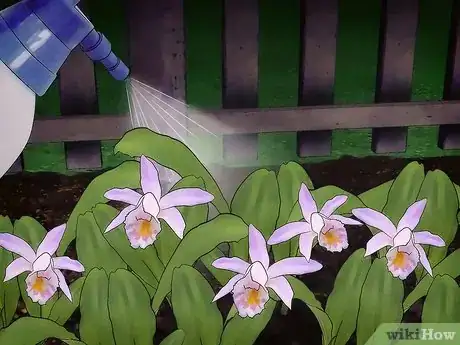
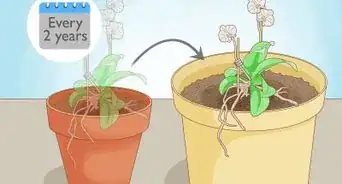
-Step-8.webp)
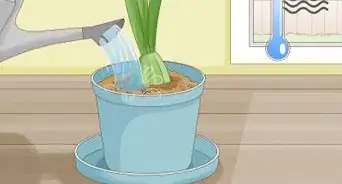
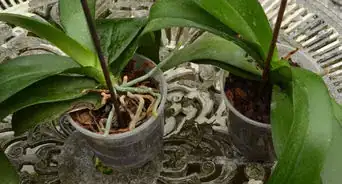

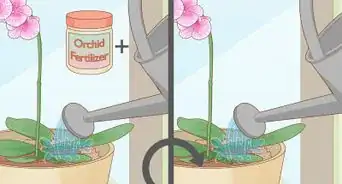

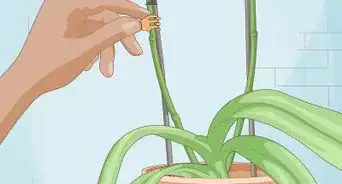



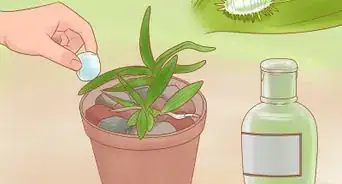
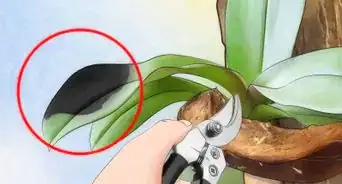













-Step-8.webp)

